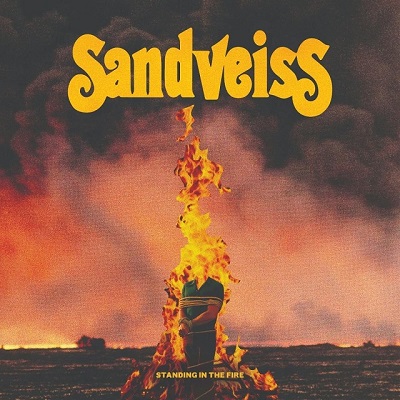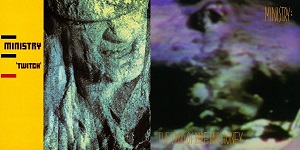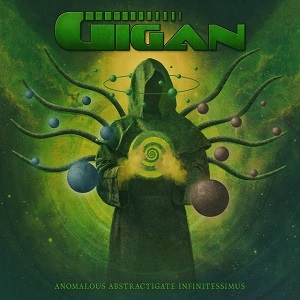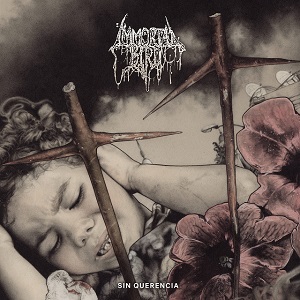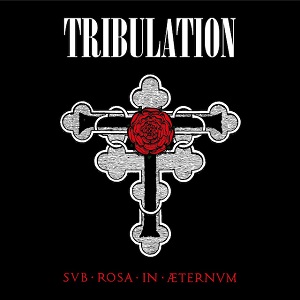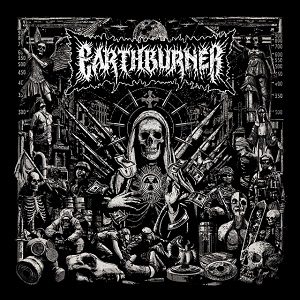JUDAS PRIEST – Rocka Rolla Turns 40: “If Anyone Stepped Out Of Line, I Would Just Threaten To Beat Them Up”
September 6, 2014, 10 years ago
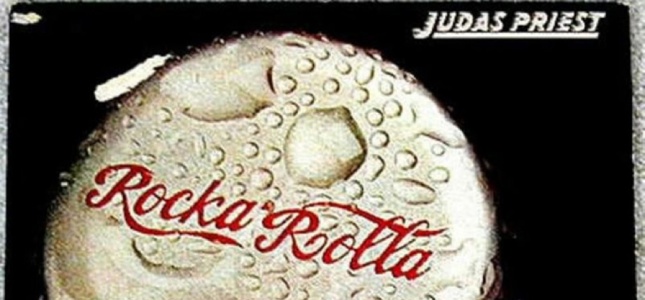
September 6th, 2014 marks the 40th anniversary of the release of Rocka Rolla, Judas Priest’s modest debut album after fully four years plying their trade in the Black Country. We almost tend to forget this record because of the masterpiece that was Sad Wings Of Destiny. But truth be told, it’s an album that sets the blueprint for Priest’s huge contribution to metal in so many days, from the proggy-ness to the doom, even toward the commercial song feel of the golden era, through the accessibility of the flash title track.
BraveWords celebrate this milestone record—as well as our productive 20 year relationship with the band—with this abridged excerpt from my out-of-print Judas Priest book Heavy Metal Painkillers: An Illustrated History.
Judas Priest’s debut album would only hint at the majesty to come, and with little of the grand religious overtones the band would adopt one shocking step up the ladder later with Sad Wings of Destiny. First with the wrapper, Gull Records artist John Pasche would spin a pun with Coca Cola into a cover concept, and then top it with a logo that would turn out to be used once and then discarded like a bottle top. Although the cover would be admired as an artistic piece, the band were none to pleased with it (Mel Grant would later supply a rote and forgettable heavy metal illustration called “The Steel Tsar” for a reissue of the record in 1984). Flip o’er to the back, and the Judas Priest bassist looks very much like the Black Sabbath drummer, “Bob” Halford is sporting long, blond hair, and Glenn Tipton is looking sartorial behind a mustache.

Onto the music, and one found a band willing to be proggy, heavy, riffy, all sorts of things, even doomy, but not so concerned with the logic that makes commercial songs comfortable and thus saleable.
“Ken and Glenn did the lion’s share of the music,” says Ian, trying to grapple with the issue of the band’s early influences. “But I don’t think there were very many outside influences. I try not to, because it will show in my bass lines, and I’m sure it’s the same for K.K. and Glenn. But we all liked Cream and Ken was a Hendrix freak—you always keep those. But it was almost a conscious effort not to sound like anybody else, and it used to baffle people because they couldn’t put a tag on us and say, ‘Yeah they sound just like Sabbath or Zeppelin.’ Sure, we’d go out and buy other heavy records and listen to them because we were interested, but it was always separately; it wasn’t like, ‘We better go get this one.’ You wouldn’t let it influence you.”K.K. gets a bit more specific on the origin of the band’s sound. “When people set the precedent… like, I have to agree with you, Deep Purple - In Rock is one of the greatest albums of all time. But growing up in England, there had to have been another 150, 200 bands who were equally as influential, from John Mayall’s Bluesbreakers to bands like Cream, Hendrix, the Who, Rory Gallagher, Free, Blodwyn Pig; you’ve got Jethro Tull, Chicken Shack, a lot of blues bands, Savoy Brown, Foghat, Fleetwood Mac, great bands like Budgie who are pretty much unknown now but whatever… they did some great stuff. They were all great influences, so if you were going to compete with the likes of Sabbath or whatever, you damn well better come up with something pretty good and unique. Otherwise you’re not going to go anywhere. And even if you were good, it was hard to make any headway. So we decided to come up with stuff we thought was top quality, to have quality control over what we put out, and that’s stayed with us to this day.”
To catch up, Priest at this point were managed by David Corke and MAM. John Hinch was the band’s drummer, with, curiously, Tipton providing some synth work as well as backing vocals on their first album. Rocka Rolla was recorded late June, into July of 1974, issued September 6th, on Gull Records. The production on the album was in fact handled by Rodger Bain, with Vic Smith mixing. The band has always thought the production wasn’t the greatest, with Ian calling it “lame,” noting that various remasters and reissues have spruced up the sound a bit. In this writer’s opinion, there’s very little wrong with the production, other than a touch too much intimacy and twee-ness. Other than that, the bass and the treble and the placement of the instruments are all more than acceptable for 1974—it really wouldn’t be until Hell Bent For Leather that the band would get a production where no complaints whatsoever could be leveled against it. Still, the tinkering with Rocka Rolla would start as early as 1981, with the exploitative Hero, Hero compilation receiving remixing and remastering by original producer Rodger Bain.

Back to 1974, and into the studio (Sparks and Paul Rodgers were also working there), Priest found themselves intimidated by working with the man who produced Black Sabbath. What’s more, poverty had them sleeping in the van outside the studio and recording at night when the rates were down. John Hinch complained about being rushed through his parts, and the rest of the band were instantly disappointed with the transfer of their aggressive, loud performances, to the relative tepidness of the final product. In fact, K.K. has said that Rodger Bain had fallen asleep on the couch after having worked 36 hours straight. He then had to pop up and put the album straight to vinyl, with most of his faculties still fogged.
As it would turn out, Rocka Rolla opens with “One For The Road,” a naff lyric about all of us appreciating music together floating atop a complex but contemplative riff that would have held its own on Sad Wings Of Destiny, lyrics of this world and not the other, notwithstanding. The chorus possesses its own upper crust integrity on this fitting opener to the recorded canon of the Priest, establishing a charted course toward the relentless invention of Priest albums not three years away.
The title track is next, and it’s a hard working, hard rocking charmer, easily the album’s singalong anthem—lyrically, the song is a colourful, humourous, light-hearted look at a man-eater of a woman. Halford is ever the thespian, shaping his lines (even adding a bit of harmonica—scrubbed off on select future remixes) while K.K. and Glenn give us their first highly tuneful twin lead duel, along with a Celtic melody straight out of early Thin Lizzy.
Then Priest get progressive on us, turning in a four-parter later dubbed the Winter Suite, or less popularly, the Judas Priest opus. This collection of movements would cause no end of distress to CD reissuers who would variously leave the songs as one block, or assign partitions correctly or incorrectly. In any event, the songs proper are “Winter,” “Deep Freeze,” “Winter Retreat” and “Cheater,” with only the latter leaping out as a semi-classic, “Cheater”’s gallop positioning this technical rocker as, again, something that could have easily fit the trundling bluster of the band’s sophomore album.
Comments original Priest vocalist Al Atkins, unsurprisingly credited with some of the songwriting on the album, “I wrote the lyrics to ‘Winter’ in 1969 on a tour of Scotland when the first Judas Priest got stuck up a mountain in the snow in the middle of winter. God it was cold, and we were all penniless.” “Cheater” doesn’t have much to do with Atkins’ contemplative reflections on winter’s chill of the soul, but nonetheless, it kind of breaks the listener out of its reverie. In essence, the fairly uneventful preceding bits serve as a dramatic introduction to this modern metal classic. Hinch in fact grooves forcefully on this one, with Halford providing spirited harmonica work with a jamming blues band vibe. Essentially, the grouping of “Cheater” with the suite is now considered by the band to be an error.
Still, the Winter Suite is an admirable piece of work, with the opening track “Winter” capturing very much a Sabbath vibe, huge mournful guitars oozing all over simple but effective fills from Hinch. “Deep Freeze” recalls Sabbath’s “FX” and precedes Rush’s “Didacts And Narpets” by a year. In fact the whole 9:40 stride of the piece predicts the epic constructs Rush would adopt, with “Winter Retreat” sounding uncannily close melodically to passages from both sides of Rush’s 2112.
Onto side two and another leaden interlocutor on par with “Cheater” and “One For The Road” emerges. “Never Satisfied” feels in fact like a cross between the two. It is a track self-sufficient and powerful yet obtuse and bluesy, laced with intelligent riffs warmly recorded, atop full-bodied bass and a square-ish but not unpleasant drum sound. Says Atkins, “I wrote this song about greed and changes in life and will we ever be satisfied at all? K.K. wrote some extra lyrics at the end—‘There's nowhere left to go/This could be our last show.’ I don't know what he meant by that, but he was credited for it for what it was worth.” The bubbly, volcanic, iconic riffing of Glenn and K.K. can be heard in its impressive infancy here, again, this being a track befitting the brooding, medieval totality of Sad Wings with nary a dust-off needed, save perhaps for flashier lyrics. The song’s closing sequence features an unwinding slow down along with deflating Sabbatherian melodic trademarks, punctuated finally with a Halford wail that predicts the much better “Victim Of Changes” crescendo to come on the band’s next groundbreaking record.

Come “Run Of The Mill,” and Rob finds something to enthuse about after all these years, claiming that the “You can’t go on, can’t go on bit” is of a range he hasn’t been able to hit for heavy metal ages. Still, the track is all but forgotten today, serving to remind us of a much more naïve and in fact adventurous time in rock ‘n’ roll history. The song is a dark, despondent ballad with huge Sabbath chords breaking the contemplation before a return to the bluesy stealth of the pre-Rush progressive mid-rock tip-toeing through the verse. Much of the middle of this 8:30 meander is dedicated to deft and jazzy jamming by the guitarists over a classy groove from Hill and Hinch. Toward the end, the song breaks open for an impassioned melodic close with Rob, as mentioned, singing high but back in the mix.
“Dying To Meet You” is often paired with “Run Of The Mill” as a track also largely forgotten but crucial to the psychological effect of Rocka Rolla as somewhat uneasy and malevolent, yet progressive and almost esoteric and outside of discernible influence. The track in fact contains the most ambitious lyric of the album, only challenged by the hugely epic “Mother Sun,” partially worked up but never recorded proper for this album or any other. Once again, the band shoot directly for a Sabbath vibe on the heavy bits, but then strum electric and stormy yet folky for the softer passages. A pleasant surprise is tucked into the back half of the track. Amusingly, like the Winter Suite on side one, a classy, modern rocker, seemingly self-contained, explodes from nowhere. This time however, it is simply the second half of “Dying To Meet You—no extra naming required—with the band rocking like Nazareth or again, Thin Lizzy, capturing the metal potential of both the hard rock gallop and certain strains of Celtic.“”Caviar And Meths” is about two people of the same age growing up into two different directions, one wealthy, one not,” says Atkins about the album’s closer. The track was however rendered for the record in instrumental form. Atkins’ fairly extensive original lyrics were not used, only emerging in 1988 on his Heavy Thoughts solo album and then on his Victim Of Changes record in 1994. One must again bring up Tony Iommi, for this two minute bit of fluff could very easily have fit on Master Of Reality instead of that record’s “Orchid” or “Embryo” or even as an intro to “Solitude”—it is dead Sabbatherian in every imaginable way.
“The record's a documentation of the early years of Priest, '69 to '73,” said Al about working up the full-blown “Caviar And Meths” plus others, adding a little reminiscing of his Priest days. “It was strange for me to record songs I wrote over 20 years ago, but people often asked me about that material and I enjoyed doing it. It sounds like a '70s metal album! I don't think the band were aware of how good those songs were. I think I've proven that the early songs can be recorded now and they still sound great.”
“Priest were all great rock ‘n’ roll guys,” continues Atkins, “no different than anybody else at the time. I was the oldest member of the band, and if anyone stepped out of line, I would just threaten to beat them up, which I only had to do once. So we all got on very well. They were all pretty good players early on. I know Ian Hill comes from good stock. His dad was a bass player in a jazz band, unfortunately dying young. In '69, the band had none of the members who are there now, but in '70 the line-up solidified, although we went through three drummers from John Ellis and Chris Campbell to Alan Moore, who played on Sad Wings. Last I heard from him, he was driving a tour truck around America for the Rolling Stones. Drummers are a breed of their own. The reason I ultimately left Priest was simply because I was the only one married with a child to support and found it hard to survive in those early days, especially without that elusive record deal.”
And so Priest—with a certain metal god replacing Al—hit the road in late ’74, in support of their proud first baby. Unsurprisingly, the Rocka Rolla tour would be little more than a cold and rainy pub crawl around England, the band staying on the road for most of September and October, while logging a couple of dates in November and December. Shockingly, barely a year-and-a-half down the trail, this long-suffering bar band was about to issue one of the greatest heavy metal albums of all time.
For expanded versions of chapters from Popoff’s out-of-print Heavy Metal Painkillers: An Illustrated History (they are: Sad Wings Of Destiny, British Steel, Screaming For Vengeance) see Martinpopoff.com.

